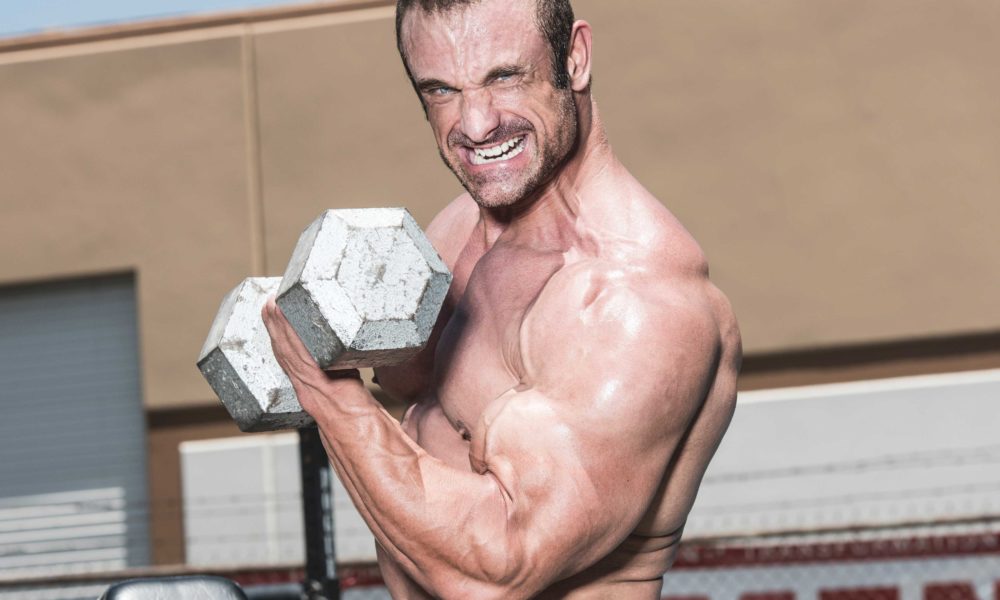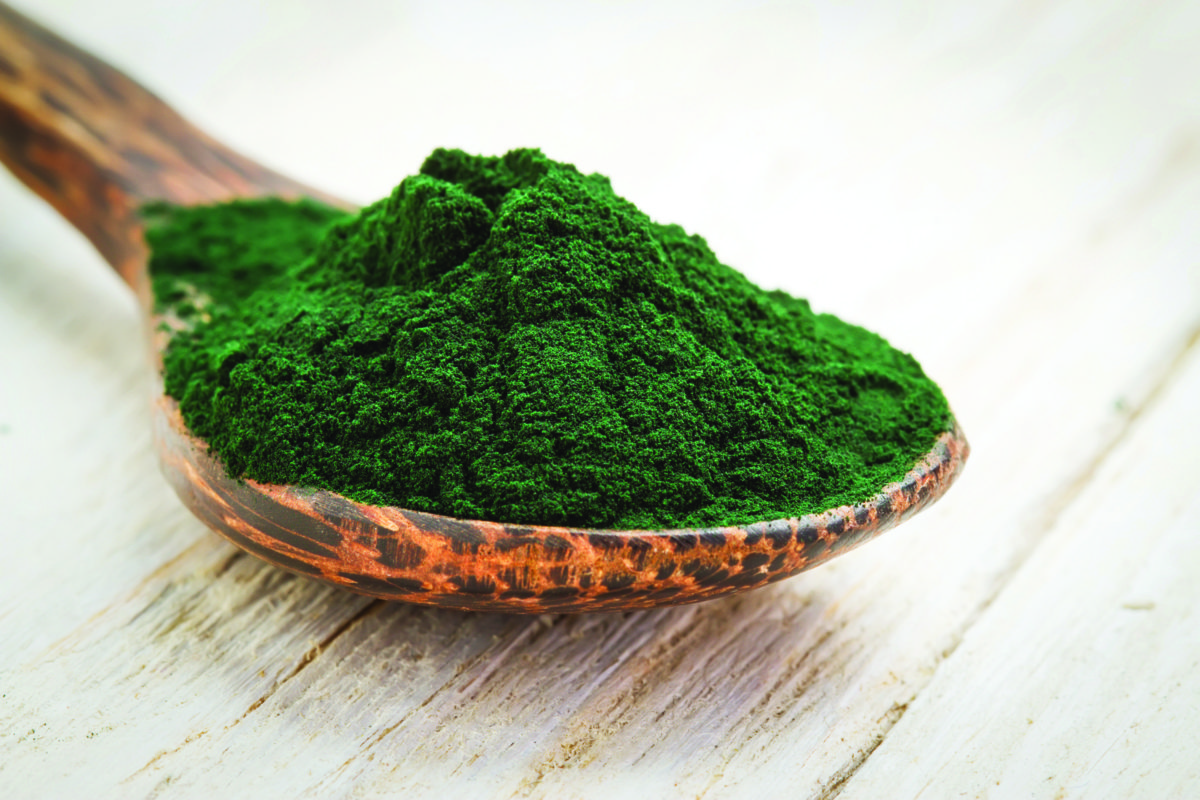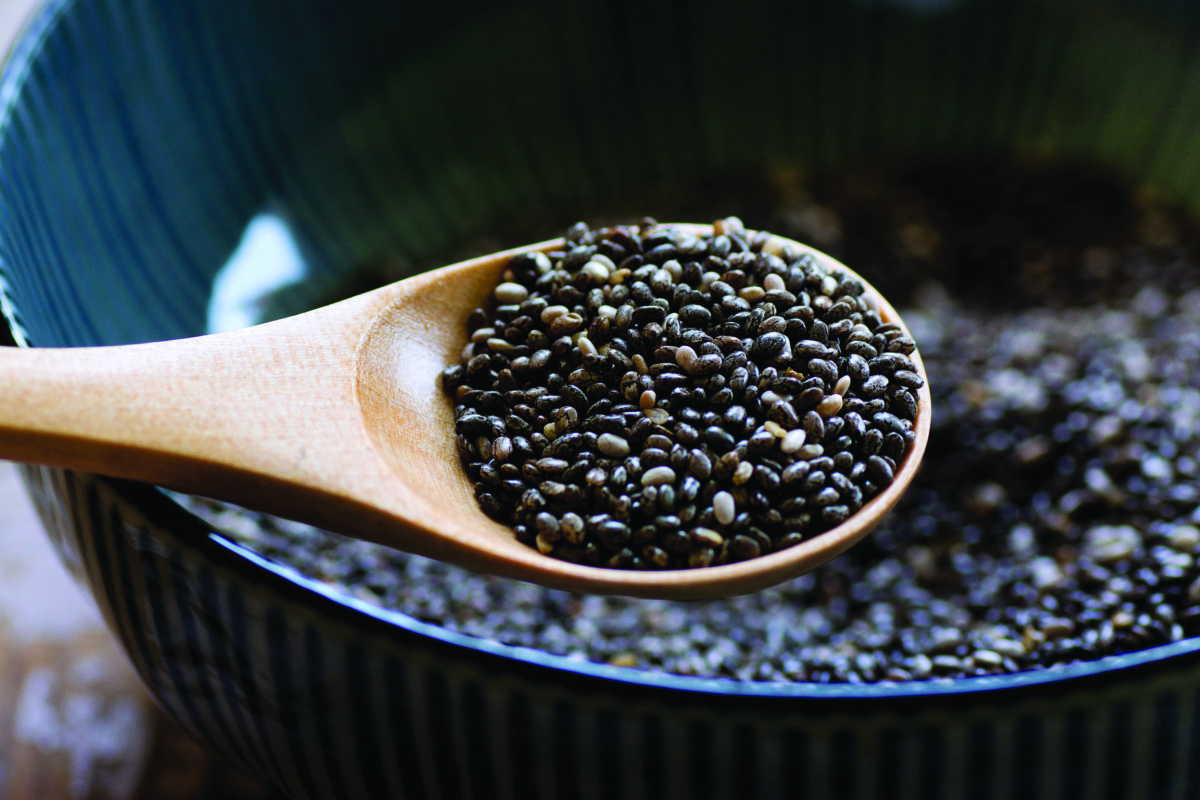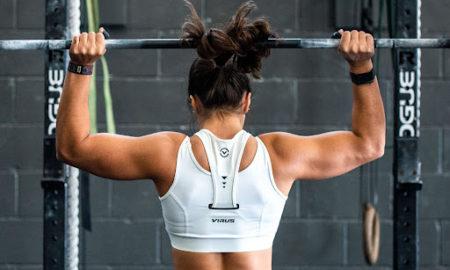

The right supplements can enhance the energy capacity, repair, and regeneration of aging muscle.
By George L. Redmon, PhD, ND
PQ: “The negative physiological changes that occur in aged muscle tissue can be naturally manipulated to the point that these losses can be decreased or even reversed.”
It’s common knowledge that prolonged physical workouts of any kind causes muscle damage. However, as a dedicated long-term resistance-training individual, have you noticed a decline or loss in your muscle gains? Correspondingly, has this anomaly been paralleled with a general slowing of the mechanical characteristics of your muscles? Do they seem to be weaker and less responsive to recovery efforts? If this is the case, there are specific reasons for these age-related changes.
A 1993 study published in Exercise And Sport Sciences Reviews revealed that over time, muscle size decreases almost 40 percent and strength by 30 percent compared to performance at age 20. Additionally, due to exercise-induced catabolism, post-exercise pain and loss of strength tend to last much longer for the aging resistance trainer, all of these anomalies and alterations within aging muscle tissue appears to pose a formidable challenge for mature individuals engaged in resistant training.
However, the loss of general muscle function isn’t a forgone conclusion. In fact, the negative physiological changes that occur in aging muscle tissue can be naturally manipulated to the point that these losses can be decreased or even reversed. For instance, scientists have found that endurance training increases the aerobic capacity of muscle and that resistance training upregulates central nervous system recruitment of muscle and increase muscle mass. They also noted that since older individuals adapt to resistive and endurance exercise training in a similar fashion to their younger counterparts, the decline in the muscle’s metabolic and force-producing capacity can no longer be considered as an inevitable consequence of the aging process.
Preserving And Building Mature Muscle
Studies have confirmed that creatine increases the short-term capacity to perform quick repeated bouts of intense activity in mature individuals, just like it does in younger athletes. For instance, researchers at the Department of Health and Exercise Science at the University of Oklahoma recently reported that 14 days of creatine supplementation increased upper-body grip strength and increased physical workload capacity by delaying neuromuscular fatigue in both mature men and women. Similarly, researchers at McMaster University in Canada followed mature subjects participating in a whole-body resistance exercise routine three days per week for 14 weeks. One group received five grams of creatine plus two grams of dextrose, while the placebo group received seven grams of dextrose only. Fourteen weeks of training resulted in significant increases in all measurements of strength, functional tasks, and muscle fiber area in both groups. However, the creatine group experienced significantly greater increases in fat-free muscle mass, isometric knee extension strength, isometric dorsiflexion (ankle) strength, and intramuscular creatine levels. Furthermore, creatine increased cellular hydration and myogenic transcription factors, which speed up the activity of muscle-specific genes such as myosin, which excites or triggers genes, which accelerate muscle hypertrophy.
Additional research seems to show that older gym-goers hang onto the benefits of creatine longer. Scientists at the University of Saskatchewan in Canada recently discovered that creatine’s positive effects on strength and lean-tissue development in older adults continued for at least 12 weeks after they discontinued its use. Withdrawal from creatine had no effect on the rate of strength, endurance, and loss of lean tissue mass during 12 weeks of reduced-volume training.
Hormone Production
It’s common knowledge that hormone production begins to decline as we age. The fact is, most men lose about 10 percent of their innate testosterone levels each decade and growth hormone (GH) can decline by 50 percent every seven years after about the age of 25. However, maintaining the activity of various anabolic hormones like insulin-like growth factor 1 (IGF-1), GH, and testosterone is critical to your continued success, as these hormones perpetuate the anabolic continuum. Fortunately, physical activity has a positive impact on IGF-1, GH, and testosterone production. In fact, physiologically, GH triggers IGF-1 production, and the more GH present in the body, the more elevated IGF-1 remains. Ironically, the largest amount of GH release occurs during sleep. Anti-aging researchers now know that the stability of these two hormones extends the life expectancy.
Researchers have established some guidelines to help maintain levels of these anabolic hormones, which includes a combination of strength training, proper sleep, and avoidance of simple carbs (especially at night), which can restrict your body’s production of GH because insulin and GH can’t coexist in your body at high levels at the same time. Also, researchers suggest reducing alcohol intake substantially, as studies indicate that alcohol suppresses the activity of enzymes that assist in the breakdown of testosterone, as well as interfere with the production of IGF-1/GH and decreases protein synthesis. Additionally, there are a number of nutritional supplements that can help you in your efforts to maintain stable levels of these hormonal anabolic activators. D-aspartic acid, fenugreek, Tribulus terrestris, DHEA, tongkat ali, and vitamin D support testosterone levels. Alpha-GPC, citrulline, glutamine, L-arginine L-ornithine, and L-lysine can boost growth hormone production.

Mitochondria And Muscle
Unless an active lifestyle is rigorously followed, skeletal muscle mitochondrial decline occurs with age, researchers at the Mayo Clinic state. As you know, mitochondria are where cellular energy—adenosine-triphosphate (ATP)—is manufactured. Current data indicates that the more ATP you can manufacture in your muscles, the longer that muscle will work for you, as well as gaining added strength and size along the way. Your ability to heighten and sustain your ATP stores are critical to both your physical and chemical (cellular) energy needs. For example, consider the findings in a recent edition of the journal Aging Cell that revealed that older mature, low-training individuals experienced a decrease in muscle mass by 38 percent and 30 percent, as compared to younger and high-functioning mature individuals. These researchers also noted that levels of the important metabolic regulators SIRT3 and PGC-1α, were significantly reduced (50 percent) in both groups of mature participants compared to young participants. PGC-1α regulates the genes involved in energy metabolism, essentially regulating mitochondrial biogenesis (the process by which new mitochondria are formed in the cell) and function. Unfortunately, mitochondria cells are easily oxidized or damaged, especially in aging cells. Incidentally, SIRT3 is a protein that helps protect mitochondria against oxidative damage.
Maintaining mitochondrial health and is of utmost importance for those who want to grow old with some muscle still on their frames. Remember, once an ATP molecule is formed, it is packed with a powerful burst of energy, but once used, it disintegrates in about 10 seconds. For this reason, the continuous creation of this molecule is something not only the muscles, but also the body, live and breathe to recreate. There are several nutritional supplements that helps to regenerate this power-packed energy molecule. They are acetyl-L-carnitine, chlorophyll, and CoQ10, creatine, ginger, magnesium, malic acid, NADH, rhodiola, and ribose.
Reducing Inflammatory Markers
As stated earlier, mature individuals don’t recover as quickly from exercise-induced muscle damage. One of the ways researchers has focused on minimizing this anomaly is by reducing the upregulation of various exercise-induced inflammatory chemicals such as C-reactive protein and others that accelerate muscle damage. For example, researchers at the Human Performance Laboratory at the University of Connecticut state that exercise acts to minimize inflammation and its ability to accelerate aging. However, older athletes can be hampered by inflammation caused by poor muscle recovery as well as wear and tear on joints. These researchers looked at the impact a multi-nutrient supplement containing branched-chain amino acids, taurine, anti-inflammatory plant extracts, and B vitamins had on inflammatory status, endothelial function, physical function, and mood in middle-aged individuals. A randomized, double-blind crossover design was conducted for one 28-day cycle of placebo supplementation and one 28-day cycle of the multi-nutrient supplementation separated by a one-week washout period. At the conclusion of this investigation, the group who took the supplement enjoyed a reduction in various inflammatory markers of muscle damage such as alpha-1-antichymotrypsin, creatine kinase, and interleukin 6.
Several supplements have shown the ability to diminish the activity of various inflammatory markers such as alpha lipoic acid, bromelain, ginger, omega-3 fatty acids (fish oils), quercetin, resveratrol, turmeric, and vitamins C and E.

Rest And Recuperation
At the hallmark of any sound resistance-training program is planned cycles of rest, recuperation, and at least eight hours of good sleep. Nonetheless, exercise physiologists argue that despite recovery being the most important aspect of resistance training, it is constantly underestimated consequently followed by overtraining. A case in point, current data indicates that it can take up to 72 hours or more to fully recover from a workout. Many researchers even suggest that a full week of rest between working each muscle group is needed to realize full recovery. Additionally, it can also take seven to14 days for the neuro-muscular system (the muscles of the body together with the nerves supplying them) to fully recover from an intense strength training session.
Aging muscle appears to recover at a slower pace than younger muscle tissue. However, data clearly shows that aging muscle adapts to a resistance trainer similarly to its younger counterparts. The key to sustaining this physiological attribute appears to be proper consistent training guidelines versus overtraining, as well as the right combination of nutrients and supplements to assist in maintaining your muscle’s full anabolic potential. IM


















You must be logged in to post a comment Login